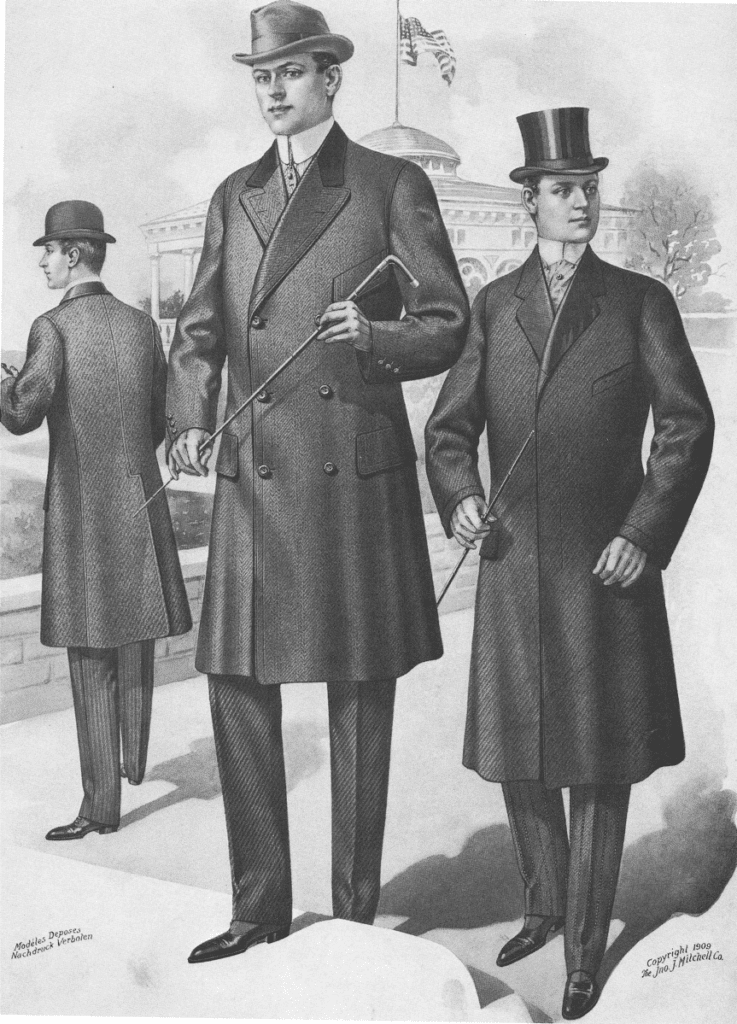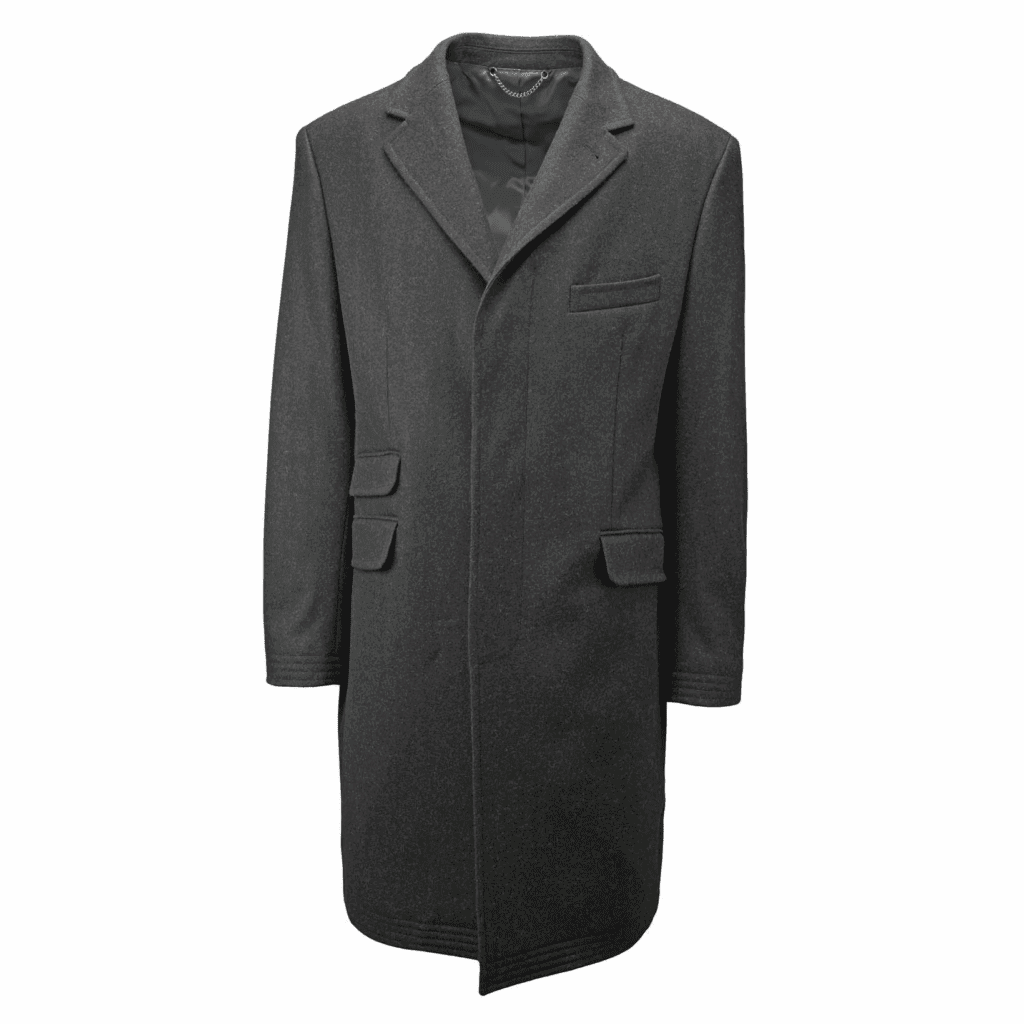Known as a type of coat, the Crombie coat does not in fact exist. At least not as a style. Crombie cloth goes back to Aberdeen in 1805, so Crombie is one of Britain’s oldest brands in clothing and menswear. Chances are, you have seen pictures of three-quarter length coats on lads and girls from the 60s, and assumed that the Crombie is the style rather than the maker.
The story has a little more to it than that. The Crombie label began with John Crombie, and his son James Crombie, in Aberdeen. John came from a family of weavers and started producing his own cloth at Cothal Mills, from 1859 at Grandholm Mill where production stayed until 1990.

The Company became famous for its luxury cloth, sold through merchants and tailors across Europe and by the 1860s in America, where Crombie’s cloth was popular with Confederate soldiers, who used it to make coats.
Crombie itself started making coats for the Army in the 1860s, and was popular with ready-to-wear customers by the 1920s. The company made a coat for one Lord Chesterfield, and ended up calling it the Chesterfield – a double breasted, fitted coat. Chesterfields have been called by that name ever since and often feature a velvet collar. Done in grey herringbone, navy and other sober colours and weaves they are still a staple of the business wardrobe.

Chesterfield Coats
Another style, mistakenly called a Crombie, is a covert coat, designed for hunting. Made of thornproof tweed, it has a single button line, the buttons being concealed by a front fly. Shorter and less fitted than a Chesterfield, it is popular in rural areas.
By the 1950s, urban variations on the covert coat style, bought in Crombie’s retail shops in London, Manchester and elsewhere, were becoming popular with the new generation, often worn with jeans and cotton trousers. Crombies were part of the skin head and later suede head uniform, replacing the parka popular with mods. In melton, the Crombie coat was elegant and practical.

Is this a Crombie coat? It might be, if it is made by Crombie, but chances are people will call it that, because of the style. It does not have the velvet collar, so it would not pass muster as a Crombie, probably, even if it were made by Crombie – and there we have an interesting sort of conundrum.
This is another case of what happens in menswear – the maker’s name ends up synonymous with the garment, such as Burberry’s making a raincoat called a Burberry, which is now used for any raincoat with shoulder straps and a belt. Similarly, Macintosh gave its name to raincoats and Barbour to waxed cotton jackets.